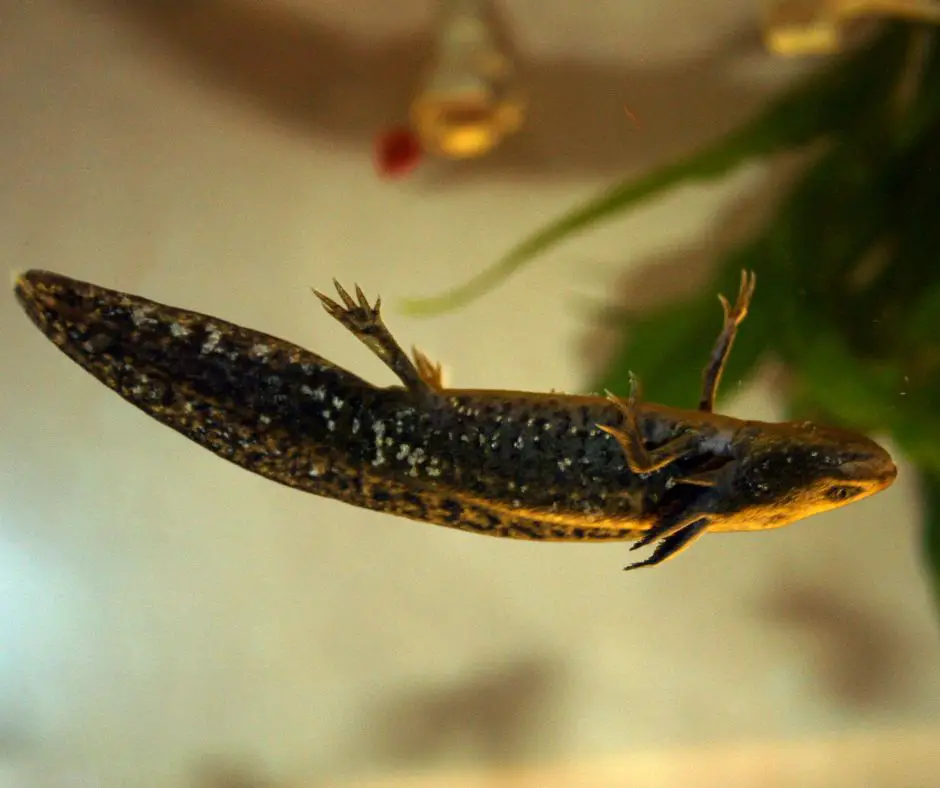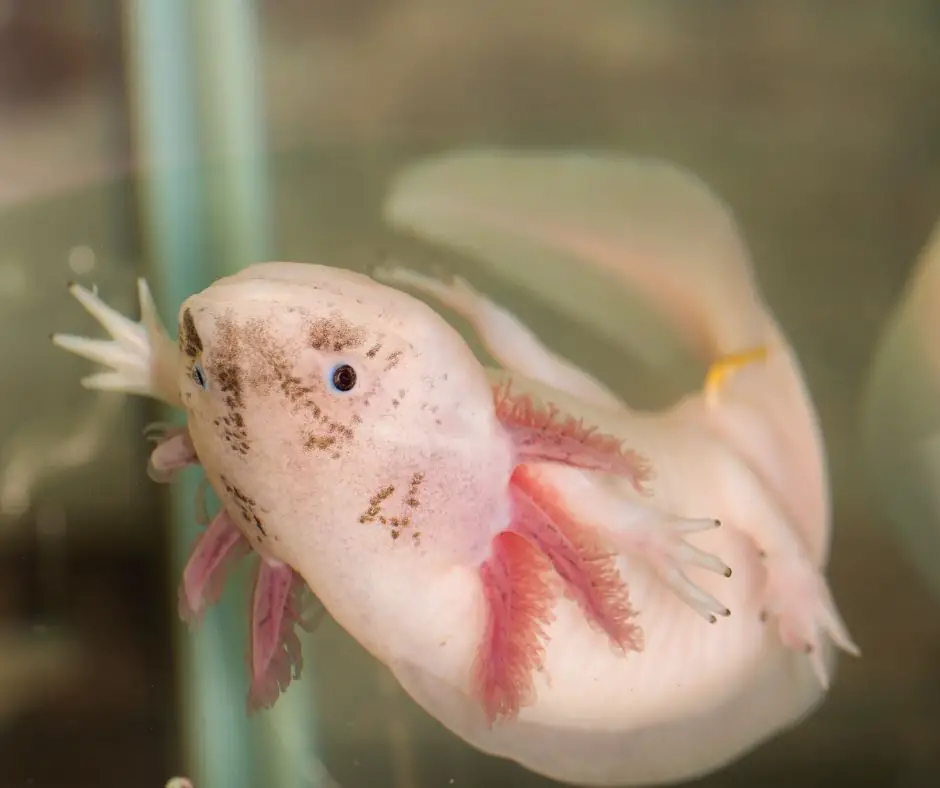Axolotls, also called the Mexican Walking Fish, are unique salamander species that spend their lives in the water.
Axolotls have a unique appearance and lots of fascinating behaviors. One of the behaviors is that you can find your axolotl floating upside down, and you may be wondering what it means.
Generally, it is not normal behavior for axolotls to float upside down as they don’t do it on purpose. This means it is an indication that something is wrong with your axolotl.
Axolotls will float upside down if there is accumulated air in their abdomens, ingested gravel, poor water quality, bacterial infection, or kidney damage.
In this article, we will highlight everything you need to know about axolotl upside down, from what this means to what you can do when this happens.
Contents
What Does It Mean When Axolotl Upside Down?
Generally, axolotls cannot swim upside down. However, if you find your axolotl upside down, it indicates that something is wrong.
Juvenile axolotls can float upside down when they accumulate air in their abdomens.
On the other hand, adult axolotls swim upside down due to poor water quality, bacterial infection, ingestion of gravel, or kidney damage.

Accumulating Air (Bloat)
Your axolotl can swim upside down if they accumulate air in their abdomens, usually common with juvenile axolotls.
The air accumulated will make their abdomen distended and float upside down with their belly facing the aquarium cover.
You can notice this behavior shortly after your juvenile axolotl eats. This usually occurs to juvenile axolotl because they have an immature gut adapting to a high protein diet.
The best thing is that this will decrease over time as your axolotl gets used to the protein diet.
Although this will correct as the axolotl matures, you can also solve this problem by reducing the portion size you offer your axolotl.
You can also consult with a vet if this symptom persists after your axolotl has grown up.
Also read: What Can Axolotl Eat?
Axolotl Becomes Ill

Axolotls can also swim upside down to indicate a more serious issue that you need to address.
It is possible for axolotls to swim upside down if something is wrong with their water quality, and bad water quality can stress out your axolotls and make them swim upside down.
You can check the water quality of their tank to see whether it contains ammonia or it is dirty because of axolotl waste.
Axolotls can also swim upside down if it ingests gravel, leading to impaction. Axolotls will do this to try and expel the gravel through feces.
It is also possible for the axolotl to float upside down if it suffers from bacterial infection or kidney damage. If this is the case, it is best to consult with a vet for diagnosis and treatment.
Also read: Full Requirements & Water Conditions for Axolotl in Captivity
What Should You Do If Axolotl Upside Down
The best thing to do if your axolotl is upside down is to prepare a fresh container with dechlorinated water for your axolotl.
You also need to ensure that the water just covers their head. This will help to stop your axolotl from floating upside down while you determine what is wrong with it.
Note: Axolotls have rudimentary lungs and can suffocate if you take them out of water.
This means you should ensure that you don’t keep your axolotl in the fresh container for too long as they can be starved of oxygen leading to asphyxiation and death.
Since you don’t know what is exactly wrong with your axolotl, you should also stop giving it any medication during this period.
While your axolotl is in the fresh container, you can then check out some parameters such as water quality, substrate, temperature, or if there is anything that your axolotl could have swallowed in their tank.
You can also determine whether your axolotl is eating or not.
Aqueon 10 Gal Black Aquarium
- High quality glass construction with clean silicone sealed edges
- For freshwater and marine applications as well as desert or tropical terrarium applications
- Tank measures 20.25" long x 10.5" wide x 12.625" high
- Always include a drip loop when plugging aquarium appliances into the electrical outlet
- Place aquarium on a stand that is able to safely bear the weight of a filled aquarium
Last update on 2022-12-30 / Affiliate links / Images from Amazon Product Advertising API
FAQs
Why is my axolotl floating vertically?
Axolotls can float vertically facing the tank top if they are looking for more food or are still hungry.
This usually happens when you are feeding your axolotl, and you should only feed them a little more food to avoid overfeeding them when this happens.
Do axolotls float when dead?
Why is my axolotl floating head down?
Axolotls float head down, indicating they are suffering from bloating or impact. Check tank temperatures and keep tank cold to support the axolotl in digesting food.
In Conclusion
Although it is not normal for axolotls to swim upside down, axolotls do this to indicate something is wrong with them.
Axolotls can swim upside down due to poor water quality, bacterial infection, ingestion of gravel, kidney damage, etc.
It is recommended that you determine the cause of the problem once you notice that your axolotl is swimming upside down and treat it accordingly.

